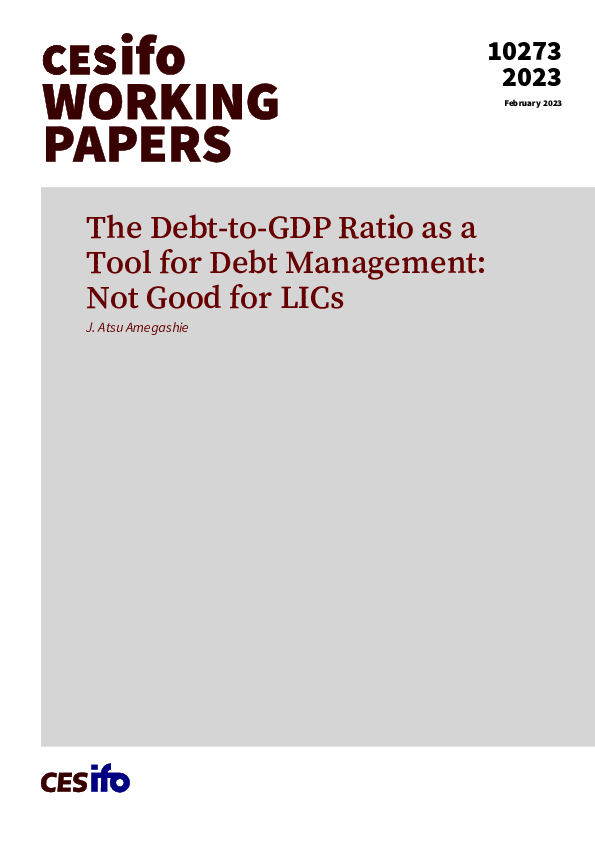The Debt-to-GDP Ratio as a Tool for Debt Management: Not Good for LICs
CESifo, Munich, 2023
CESifo Working Paper No. 10273

There have been criticisms of debt sustainability analysis in general, including the IMF’s own evaluation of the usefulness of its debt sustainability methodology (e.g., IMF, 2017). This paper’s focus is narrow. On the basis of theoretical arguments and empirical evidence, it argues that the debt-to-GDP ratio is a poor metric for debt management in low-income countries (LICs). It makes a case for explicit revenue-based metrics of debt management. In LICs or countries with weak institutions, the debt-to-GDP may be manipulated by understating the stock of debt, resorting to dubious accounting methods, and there is a weak correlation between GDP and revenue as result of inefficiencies in the tax administration and a large informal sector. It is also arelatively inefficient predictor of debt distress. Other reasons are given in the paper.
Public Finance
Fiscal Policy, Macroeconomics and Growth